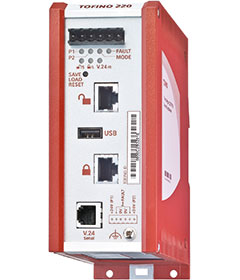

Security concerns faced in the electrical substations of today stem from a variety of factors. The adoption of new technologies – such as transmission control protocol/Internet protocol (TCP/IP)-based technologies for both substation automation networks and wide area network (WAN) communications between substations – has opened these networks up to more cyber threats. A good cyber security policy, however, is a simple first step to maintaining the reliability and the safety of substation and grid operations.
Cyber security is often used to describe protection against online attacks, but a more holistic view of cyber security involves a collection of measures adopted to prevent unauthorised use, malicious use, denial of use, or modification of information, facts, data or resources. Cyber security not only refers to intentional attacks from outside the network, but also internal issues and unintentional modifications of information.
With both internal and external threat sources in mind, it is important to establish preventative processes for any issue that could lead to network downtime. These measures could include devices, configurations, internal security policies, and employee and contractor training. And since it’s not realistic to assume all threats can be prevented 100% of the time, recovery strategies after issues occur are also critical to protect network uptime.
Cyber security in utility communication networks
Historically, substation control networks were based on local connections and proprietary applications. Systems were designed for safety, reliability and ease of use, and security was not traditionally a concern of network managers or installers. But this approach is no longer valid.
Today’s communications networks are characterised by the use of:
• Commercial off-the-shelf technology.
• Ethernet and TCP/IP-based communications protocols.
• Open standards, IEC60870-5-104 and IEC61850.
• Integration of legacy industrial protocols (DNP3) and Modbus TCP.
• Remote connections (multiple devices and mobility).
• Interconnection with company IT systems.
• Use of public networks.
The complexity of power grids has increased over the years. As they have become interconnected with systems across countries, it has made failures and mistakes more likely – and their potential impact greater in scope and cost.
A thoughtful cyber security policy, combined with a well-designed network infrastructure, can help minimise or contain threats. Cyber security policies strive to meet three main objectives:
1. Confidentiality: preventing unauthorised access to information.
2. Integrity: preventing unauthorised modification or theft of information.
3. Availability: Preventing denial of service (DoS) and ensuring authorised access to information.
In IT networks, confidentiality is the main objective. However, in industrial networks, availability is the critical design parameter.
Analysis of threats
Most network security incidents are accidental instead of intentional. According to the Industrial Control Systems Cyber Emergency Response Team (ICS-CERT) vulnerability analysis, authentication flaws were the most abundant vulnerability type identified in 2013. This liability is of particular concern because an attacker with a minimal skill level could potentially gain administrator level access to devices that are accessible over the Internet. Other common vulnerabilities identified in the analysis include factory hard-coded credentials and weak authentication keys.
Unintentional threats, such as equipment failures and employee carelessness, and deliberate threats, like cyber hackers and viruses, have different types of consequences.
They impact information systems, network infrastructure management and power system assets differently. Due to the critical role the communications network plays in the operation and protection of the high voltage and medium voltage grids, a DoS attack may lead to service disruption and financial losses, as a result of repairs and equipment replacement.
Cyber security is an iterative process – not static. As surrounding conditions or threat sources change, systems and policies may need to be updated to address those changes.
For a better understanding of this process, interested readers can download the full Belden white paper at: http://www.instrumentation.co.za/J667.pdf

© Technews Publishing (Pty) Ltd | All Rights Reserved